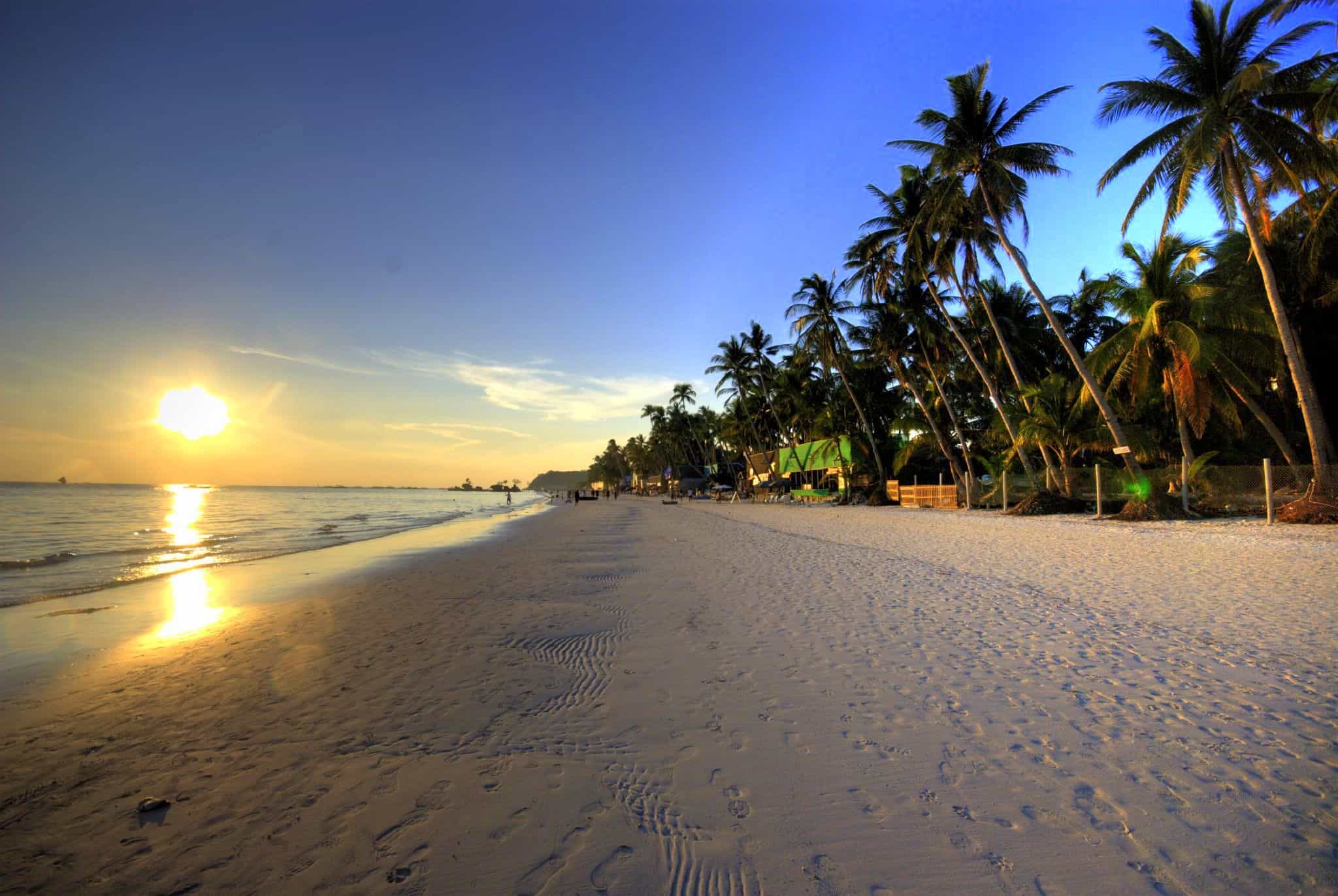 Philippines Dept of TourismBy Patricia Gajo
Philippines Dept of TourismBy Patricia GajoA little bit off the typical tourist radar, the Philippines – often called the Pearl of the Orient – is apt to impress visitors (be it families, couples or lone travellers) with its raw, natural beauty.
The Visayas, a web of islands between Luzon in the north and Mindanao in the south, is where many believe you’ll find the best the Philippines has to offer – clear warm waters, soft sandy beaches, intriguing wildlife and historical attractions.
Bright Lights, Big Cebu
With a population verging on four million, Cebu has all the familiarities of Manila – big buildings, street vendors, traffic, shopping malls, etc.
But visitors to Cebu come for the pristine beaches, in which case they likely stay on the island of Mactan, and/or the many historical sites, for which a driver and guide are recommended. Most attractions pertain to Ferdinand Magellan, the Portuguese explorer sent by Charles I of Spain, whom many credit as bringing Christianity to the Philippines. They include the much-lauded Magellan’s Cross, a replica of that which he supposedly planted to mark his arrival on April 7, 1521; a memorial garden housing both Magellan’s Marker and the Lapu-Lapu Monument, commemorating Magellan’s death; and the Heritage of Cebu monument.
Other sites include the Yap-Sandiego House, an 18th-century Chinese merchant house; Casa Gorordo, the residence of the first Filipino Bishop of Cebu; Fort San Pedro that protected the city from pirates; and the elegant Taoist Temple in Beverly Hills.
Bliss In Bohol
In contrast to big city life on Cebu, Bohol offers a more relaxed – yet no less intriguing – atmosphere.
During the day, the picturesque Lomboc River tour is a short lunch or dinner cruise with a musical show. Animal lovers should not miss the tarsier nature park or one of the early morning trips by bangka (the local outrigger boat) to Pamilacan Island to see Bottlenose, Fraser and Spinner dolphins’ as well as Brydes, Humpback and Pilot whales.
Tagbilaran, is widely known as the “City of Friendship” referring to the historical Blood Compact between Spanish explorers and a local chieftain in the 16th century. It’s home to the historic Our Lady of the Immaculate Conception church that features 19th-century retablos (devotional paintings in Philippine Baroque style), plus the Museo Eklesiastiko sa Baclayon, which houses rare ecclesiastical antiques next door.
The famed Chocolate Hills are another popular attraction, dubbed so thanks to the sunburned vegetation that turns brown during dry season. One legend involves a sleeping giant named Arugo who was in love with a mortal called Aluyah; the hills are tears that fell due to his unrequited love. At the tourist viewing station there is a workout of 214 steps in order to reach the lookout platform.
Party In Boracay
Also in the Visayas just off the northern tip of Pinay is the now legendary island of Boracay. On the verge of becoming the Philippines’ version of Ibiza in Spain, Boracay’s two beaches, White and Bulabog – there’s an 18-hole golf course in the middle – act alternately as a launching pad for water and wind sports and crash pad for those who partied too hard the night before at the many beachside bars. Hotels and restaurants on the island are mainly of the boutique or local variety.


